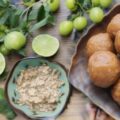Discovering the Soothing Teas of the Blue Zones
In the tranquil corners of the world known as Blue Zones, where people live exceptionally long and healthy lives, a common thread weaves through their daily routines – the ritual of tea drinking. These longevity hotspots, scattered across the globe from Okinawa to Sardinia, have much to teach us about the art of living well. And what better way to embrace their wisdom than by savoring the very teas that have nourished their communities for generations?
Join us on a journey through the aromatic world of Blue Zone teas, where each sip is not just a moment of refreshment, but a step towards a more balanced, mindful way of life. Let’s explore how these beloved brews can bring a touch of Blue Zone magic to your own daily ritual.
The Gentle Power of Okinawan Mugwort Tea
In the lush, subtropical islands of Okinawa, Japan, a humble herb takes center stage in the local tea culture. Mugwort, known as “yomogi” in Japanese, is brewed into a soothing, earthy tea that’s been a staple of Okinawan life for centuries.
This gentle brew is more than just a comforting drink. Mugwort tea is rich in antioxidants and has been traditionally used to aid digestion, reduce inflammation, and promote relaxation. The Okinawans, known for their remarkable longevity, often enjoy this tea as part of their daily routine, seeing it as a natural way to support their overall well-being.
To try this Blue Zone favorite at home, steep dried mugwort leaves in hot water for about 5-10 minutes. The resulting tea has a distinctive, slightly bitter taste that many find both grounding and refreshing. Consider adding a touch of honey if you prefer a sweeter flavor.
Sardinian Herb Tea: A Blend of Tradition and Vitality
Moving from the Pacific to the Mediterranean, we find ourselves in Sardinia, Italy – another Blue Zone renowned for its healthy, long-lived population. Here, a unique herbal tea blend has been passed down through generations, embodying the island’s rich botanical heritage.
Sardinian herb tea, often referred to as “tè d’erbe”, is a aromatic mixture that typically includes wild mint, thyme, rosemary, and other locally grown herbs. This fragrant concoction is not just a delight for the senses; it’s also packed with beneficial compounds that support heart health, boost immunity, and aid digestion.
The act of preparing and sharing this tea is as important as its health benefits. In Sardinia, tea time is often a social event, fostering connections and reducing stress – key factors in the Blue Zone lifestyle. To bring a touch of Sardinian warmth to your home, try blending your own herb tea using fresh or dried Mediterranean herbs.
The Calming Ritual of Greek Mountain Tea
In the picturesque mountain villages of Ikaria, Greece – another celebrated Blue Zone – a golden-hued tea has been cherished for millennia. Greek mountain tea, made from the Sideritis plant (also known as “shepherd’s tea” or “ironwort”), is a cornerstone of traditional Greek herbalism.
This aromatic brew is more than just a pleasant drink; it’s a testament to the healing power of nature. Rich in antioxidants and anti-inflammatory compounds, Greek mountain tea has been linked to improved cognitive function, better digestion, and stronger immune systems.
But perhaps its greatest gift is the sense of calm it brings. In Ikaria, the leisurely preparation and enjoyment of this tea is a daily ritual that encourages mindfulness and relaxation. To experience this yourself, steep the dried Sideritis stems and flowers in hot water for about 5-7 minutes, allowing the sweet, earthy flavors to fully develop.
Costa Rican “Agua Dulce”: Sweet Nourishment
While not technically a tea, the traditional Costa Rican drink “agua dulce” deserves a mention in our Blue Zone beverage exploration. In the Nicoya Peninsula, one of the world’s Blue Zones, this simple yet nourishing drink is a daily staple.
Agua dulce, which translates to “sweet water”, is made by dissolving raw cane sugar (known as “tapa de dulce”) in hot water. Often, a squeeze of lime is added for extra flavor and vitamin C. This drink is more than just a sweet treat; it provides quick energy and important minerals from the unrefined sugar.
In Nicoya, agua dulce is often enjoyed as a comforting start to the day or as an afternoon pick-me-up. While it’s important to consume sugar in moderation, the Nicoyans’ overall diet and lifestyle allow them to enjoy this traditional drink as part of their longevity-promoting routine.
Embracing the Blue Zone Tea Lifestyle
As we’ve journeyed through these Blue Zone beverages, it’s clear that their value extends far beyond their nutritional content. The real magic lies in the rituals surrounding these drinks – the moments of pause, the connections fostered, and the mindful appreciation of simple pleasures.
Incorporating these teas into your own life isn’t about strictly adhering to a “longevity diet”. Rather, it’s an invitation to slow down, to savor, and to nurture a deeper connection with what you consume. Whether you’re sipping on Okinawan mugwort tea or brewing a pot of Sardinian herbs, let each cup be a reminder to embrace the present moment.
Remember, in the Blue Zones, tea isn’t just a drink – it’s a way of life. So brew a cup, take a deep breath, and allow yourself to be fully present in the simple joy of a warm, nourishing beverage. Here’s to your health, happiness, and longevity!
Frequently Asked Questions About Blue Zone Teas
1. What makes Blue Zone teas special?
Blue Zone teas are special because they come from regions known for exceptional longevity. These teas often contain beneficial compounds and are part of cultural rituals that promote overall well-being, stress reduction, and social connections.
2. Can drinking these teas really help me live longer?
While no single food or drink can guarantee longevity, these teas are part of a broader lifestyle in Blue Zones that contributes to long, healthy lives. Incorporating them into a balanced diet and healthy lifestyle may offer benefits.
3. Where can I find Blue Zone teas?
Many Blue Zone teas can be found in specialty tea shops or online. However, you can also create similar blends using locally available herbs. The key is to embrace the ritual and mindfulness associated with tea drinking.
4. How often should I drink Blue Zone teas?
In Blue Zones, these teas are often enjoyed daily. However, it’s best to listen to your body and consult with a healthcare professional, especially if you have any health conditions or are taking medications.
5. Can I add milk or sweeteners to Blue Zone teas?
Traditionally, most Blue Zone teas are enjoyed plain or with minimal additions. However, a small amount of honey or lemon can be added if preferred. The focus is on appreciating the natural flavors and benefits of the tea.









